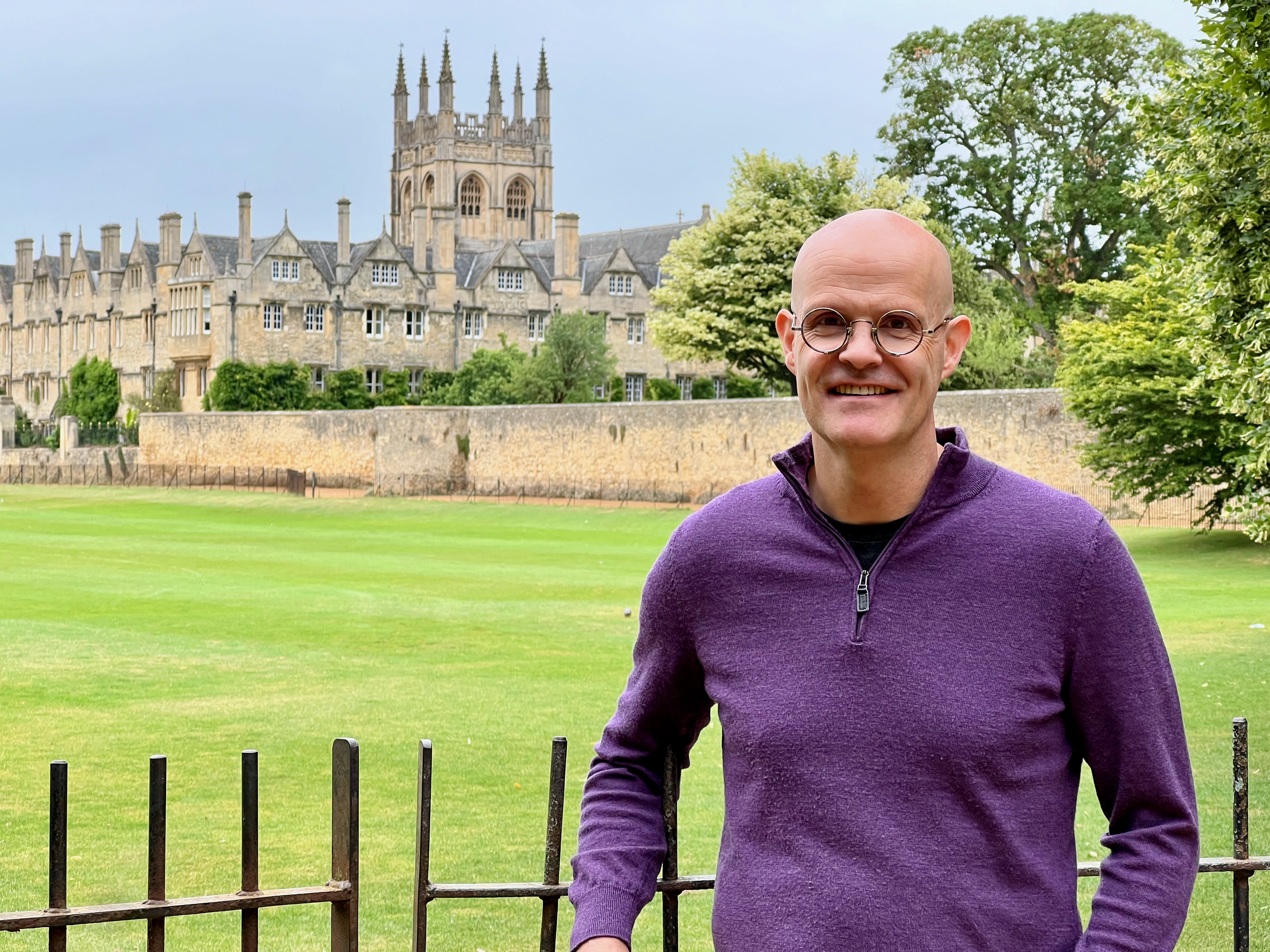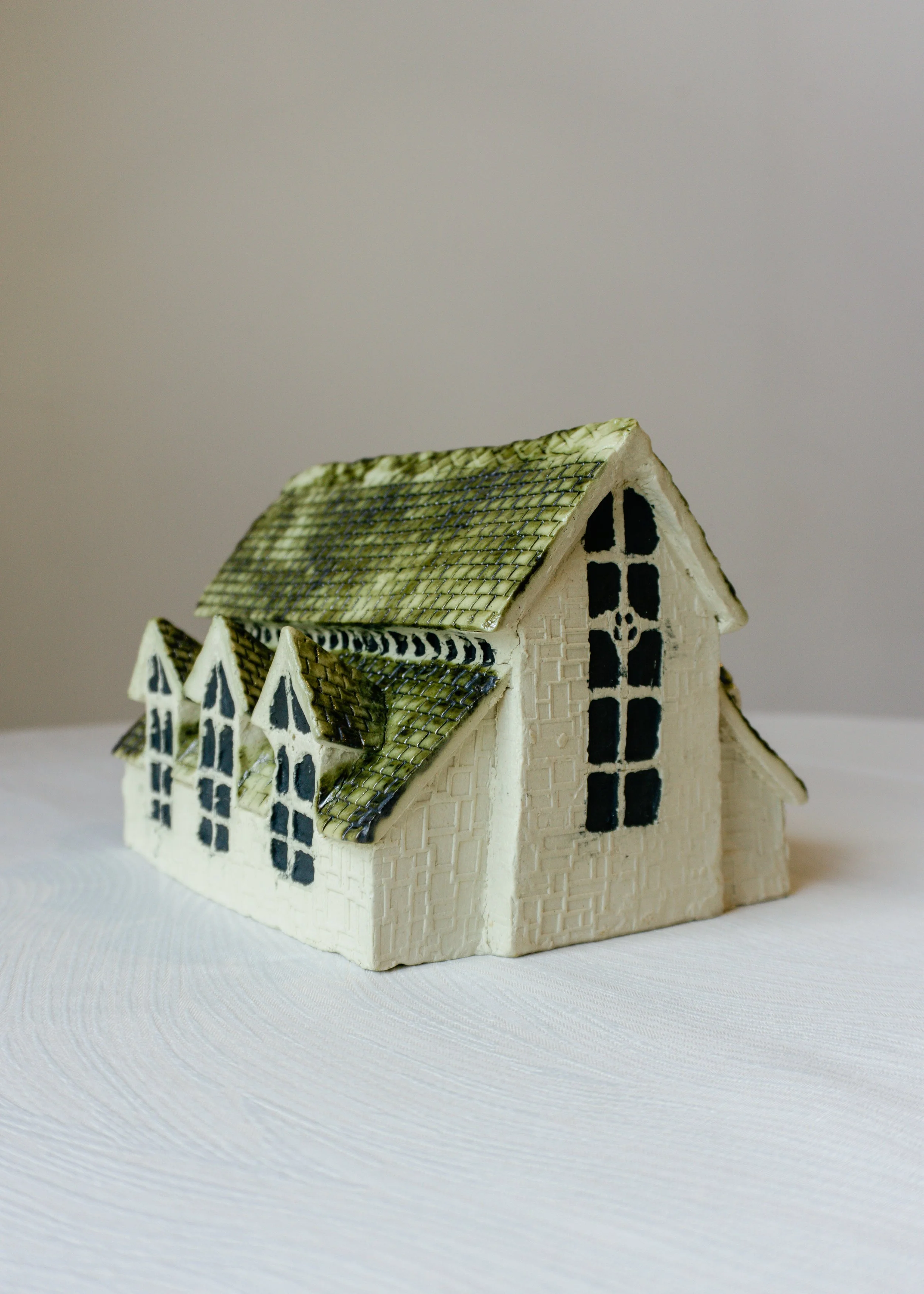Sacred Spaces
This month, we are pleased to welcome Zig Main to our Gallery Wall. Many of you may know Zig as an Art Camp teacher, Lay Preacher, LEM and a vibrant intellectual contributor to many small group gatherings. When he’s not dedicating his time to pursuing his calling as a Deacon in the Episcopal Church, he is Dr. Alistair (Zig) Main, B.A., M.A., Ph.D. (University of Oxford, UK), P.G.C.E. (University of Newcastle, UK), and a Core Teacher at the Schilling School for Gifted Children.
About six months ago, Zig began sculpting chapels and churches out of clay. It started simply—almost accidentally—with a cardboard chapel template.
“When I got home with my first clay chapel, I put some LED lights in it and it made a lovely Christmas decoration”
Though he had some experience with wheel throwing, hand-building called to him more. He wasn’t interested in cups or bowls—he wanted to shape spaces. Specifically, sacred ones.
“The first chapel made me want to build one that was meaningful to me.”
From Memory to Miniature
The second piece he built was a clay replica of Merton College Chapel in Oxford, England.
“I wanted to make this chapel because Ali and I met at Merton and the 13th Century chapel was very dear to us.”
From there, the chapels multiplied. Each new piece was made for someone, each carrying its own story:
St. Paul’s in Chillicothe: A gift for the head of Deacon School.
St. Patrick’s Cathedral in Dublin: Sculpted for a beloved faculty member.
St. Barnabas: ”Jane told me I “must” make St. Barnabas.”
The Work of Hands and Heart
These aren’t quick projects—they take time, a lesson he learned through the St. Barnabas project.
“It was the most complicated, taking five full days ( my spring break from school, as Ali was travelling around the world), 30 hours of work and it’s still imperfect.”
He cuts slabs by hand, never using molds or jigs, and works carefully to manage moisture—spraying, wrapping, waiting. Each chapel is an exercise in patience.
“Making these chapels both satisfies my need to create with my hands, which I find incredibly therapeutic. But it also uses my engineering background, as it takes great effort to support them so that they hold together and remain with straight sides, which is something clay does not naturally do. In fact, St. Barnabas was originally 20 pounds so I had to put it on a diet to keep it from buckling”
Each chapel has hidden architecture: buttresses, support beams, trusses tucked inside the clay walls. Engineering meets artistic vision.
Fire, Oxides, and the Element of Surprise
Firing each piece in the kiln is an act of surrender.
"You never know if it’s going to survive the kiln, but you wait and have faith”
He doesn't use traditional glazes. The same oxide wash—copper, cobalt, iron—can yield vastly different tones depending on subtle surface textures or positioning in the kiln.
“The Chillicothe and Oxford chapels were done with the same color but the Chillicothe came out much darker. I don’t use clay glazes, which also contain silica compounds to form a thin layer of glass so they can be used to eat from, but just the oxides as I like re- life objects to have the right feel. Real objects - rough stone.”
The goal isn’t gloss, but truth—surfaces that look and feel like aged stone, like weathered sanctuaries that have stood for centuries.
Creating as Calling
When people ask how this connects to his journey toward becoming a Deacon in the Episcopal Church, his answer is clear: it connects everywhere. He has always been drawn to churches and chapels—not just as buildings, but as thin places, where the line between earth and heaven feels faint. Creating these chapels offers a gateway for him.
“It’s like going through a covered lych gate. A gate between worlds, where for centuries has provided a pathway to holy spaces.”
Creating these small sacred spaces is his way of entering that holy space.
Abundant Gifts
"I like that people want them. I don’t need a house filled with pottery, but I do need to create with my hands and I truly love working with clay. So, it’s nice to make them and give them to people for whom they will be meaningful."
Each one is meant to be gifted—to a person, a place, a story. He believes the act of giving is what completes the creative process. Beyond clay, he’s also a writer. Last fall, he finished his first novel—initially for himself. Encouraged by another trusted reader and friend from St. Barnabas, he now hopes to write its sequel over the summer.
"Our God is the creator and we are made in His image, so I reckon, we are all supposed to be creators too."
Whether teaching chemistry, sculpting chapels, or writing fiction, there’s a common thread: creation with purpose. For him, creativity is never about performance or perfection.
"Creativity for me doesn’t need to involve anyone else.”
“It makes me feel me."
We invite you to visit the Great Hall during the month of May to see Zig’s creations in person.
Photo Credit: Zig Main and Mariah Rowland






